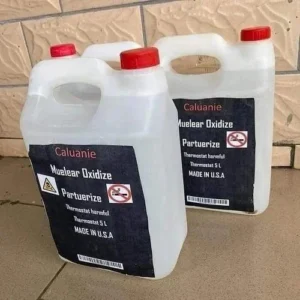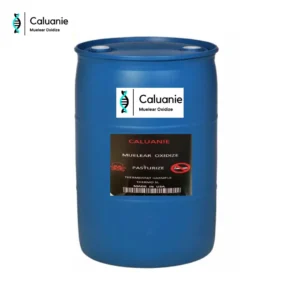In recent months, the internet has been flooded with speculative claims connecting Ozempic, a prescription drug primarily used for type 2 diabetes and weight management, with Caluanie Muelear, a highly controversial chemical substance with a history of sensationalist media coverage and underground use. These claims, often circulating on obscure blogs, conspiracy forums, and speculative TikTok videos, suggest that the two substances are related either through composition, effect, or hidden usage patterns.
Let’s understand a critical analysis of such claims. With no credible scientific evidence to support any connection between Ozempic and Caluanie, it becomes essential to dissect where these ideas originate, why they resonate with the public, and what dangers they pose—not only to public understanding but also to individual health and safety.
The Rise of Ozempic in Public Discourse
From Diabetes Medication to Cultural Phenomenon
Ozempic, with semaglutide as its active ingredient, was originally developed to help manage type 2 diabetes. Approved by health authorities such as the FDA and EMA, it works by mimicking the GLP-1 hormone, enhancing insulin secretion, lowering blood sugar levels, and delaying gastric emptying. This, in turn, reduces appetite and promotes weight loss—an effect that quickly propelled it into mainstream conversation far beyond diabetic care.
Celebrities, influencers, and even everyday social media users began touting the weight-loss benefits of Ozempic, leading to a surge in demand. Suddenly, the medication was not only a subject of medical discussion but also of viral pop culture content. Predictably, as the product entered the limelight, it also attracted scrutiny, speculation, and misinformation.
Understanding the Misinformation Machine
Why Baseless Connections Gain Momentum
Before analyzing the claims linking Ozempic to Caluanie, it’s important to understand how health-related disinformation spreads in the digital age.
- Algorithmic amplification: Sensational headlines like “Is Your Weight Loss Drug Hiding a Deadly Secret?” are more likely to go viral than sober, evidence-based articles. Social media algorithms reward engagement, not accuracy.
- Echo chambers: Online spaces where like-minded individuals share and validate each other’s beliefs can turn unverified speculation into “common knowledge” within that bubble.
- Fear-based marketing: Many of these claims are tied to people selling alternative remedies or detox programs. They create distrust in mainstream medicine to push their own products.
- Post-truth culture: Many now value personal anecdote over objective data. “I heard from someone” often carries more weight than peer-reviewed science in digital discourse.
The Core Claim: Supposed Overlap Between Ozempic and Caluanie
Anatomy of a Falsehood
At the heart of the narrative is the idea that either:
- Ozempic secretly contains or is derived from a substance similar to Caluanie Muelear,
- The two are somehow used together in black-market formulations for dramatic weight loss or physical effects, or
- They are part of a broader covert pharmaceutical or biochemical operation.
These claims rely on innuendo rather than evidence. In reality, the chemical structures, manufacturing processes, intended uses, and pharmacological profiles of Ozempic and Caluanie are completely unrelated. There is no overlap in ingredients, no shared origin, and no cross-industry production chain.
More importantly, no independent testing or regulatory investigation has ever reported any such link. Neither public FDA records nor any credible pharmaceutical data even hint at such an association.
Ozempic’s Mechanism: No Room for Speculation
GLP-1 Agonists and Their Predictable Pathways
Ozempic’s core mechanism revolves around GLP-1 receptor agonism. When injected, it behaves like the body’s natural incretin hormone. It does not act through aggressive chemical breakdown, tissue disruption, or any destructive metabolic pathways. Its action is biological, not chemical warfare.
Claims suggesting that Ozempic causes internal “chemical burn” or “molecular decay” in fat tissues (as some conspiracies allege, invoking the destructive qualities associated with Caluanie) are completely false. Semaglutide does not dissolve fat. It reduces appetite and slows digestion, creating a caloric deficit that results in gradual fat loss—not rapid deterioration.
These types of false equivalencies are created when people confuse metabolic processes with chemical reactions, often due to a lack of basic biochemistry education.
The Shadow of Caluanie: Misused Symbolism
Leveraging Shock Value for Virality
Caluanie Muelear has become, in some circles, a symbol of mystery and fear—a “forbidden” substance often linked to underground experimentation, industrial-scale harm, and dark market practices. Associating a high-profile medication like Ozempic with this kind of imagery is a deliberate tactic used by conspiracy theorists and fringe commentators.
The linkage often relies on symbolism and emotional association rather than factual connections:
- Ozempic is injected → Caluanie is used on living tissue in some allegations.
- Ozempic leads to weight loss → Caluanie “melts” material.
- Both have gained notoriety online → “There must be something going on.”
This rhetorical strategy is designed to evoke horror, not convey truth. It’s about clickbait, not chemistry.
Real-World Risks of This Disinformation
More Than Just Confusion
While the average person may dismiss such theories as absurd, they still carry serious consequences:
- Treatment Hesitancy: Patients may delay or stop taking prescribed medications like Ozempic due to fear, leading to uncontrolled diabetes or obesity-related complications.
- Unregulated Experimentation: In extreme cases, individuals—especially those with eating disorders or extreme weight-loss goals—may turn to dangerous, untested chemicals like Caluanie under the mistaken belief that they provide faster results.
- Legal Implications: The spread of medical misinformation can lead to regulatory crackdowns, affecting accessibility for legitimate patients.
- Doctor-patient trust erosion: If patients believe that their physicians are complicit in prescribing “hidden toxins,” the trust essential to effective care is broken.
No Peer-Reviewed Support for These Claims
Science Demands Evidence
The litmus test for any health claim is peer-reviewed evidence. Not a single peer-reviewed journal, regulatory body, or professional medical association has published findings that support any connection between Ozempic and Caluanie.
Additionally, the drug approval process in most countries is rigorous:
- FDA Investigations involve multiple phases of clinical trials, toxicology screening, and post-market surveillance.
- Batch testing and quality control are performed regularly to detect any contamination or mislabeling.
If Ozempic contained anything close to an unapproved toxic agent, it would have been discovered—likely long before reaching the public. The global regulatory framework for drug safety simply does not allow for this kind of secret inclusion.
Psychological Allure of Conspiracy Narratives
Why Do People Buy In?
Despite the lack of evidence, these ideas persist—and thrive. But why?
- Control in chaos: In a world of complex systems and unseen powers, conspiracies provide a sense of understanding.
- Rebellion appeal: Distrusting institutions like Big Pharma or government regulators appeals to those who view themselves as independent thinkers.
- Simplification of suffering: People struggling with chronic illness or obesity often want a clear villain to blame for their situation.
By crafting a narrative in which Ozempic is “tainted” or part of a secret agenda, these theories offer emotional—if false—relief.
Responsible Media and the Role of the Reader
Fighting Back With Facts
To counteract such narratives, readers and media outlets must embrace critical literacy:
- Always ask: Who benefits from this claim?
- Look for verifiable sources, not recycled memes or screenshots.
- If something sounds too shocking to be true, it probably is.
- Consult actual experts—not anonymous YouTube channels or Telegram groups.
Fact-checking sites, regulatory databases, and scientific journals are far more trustworthy than user-generated rumor mills. Yet they are often ignored because they don’t offer the same instant gratification.
Conclusion: No Connection, No Conspiracy
After critically examining the claims, it is clear that there is no scientific, chemical, or regulatory connection between Ozempic and Caluanie Muelear. The theories that attempt to link them rely on superficial similarities, fear-based logic, and online manipulation techniques, not data.
Ozempic remains a clinically tested, regulator-approved, and life-changing medication for many. Caluanie remains something entirely different—outside the bounds of medical or pharmaceutical legitimacy.






